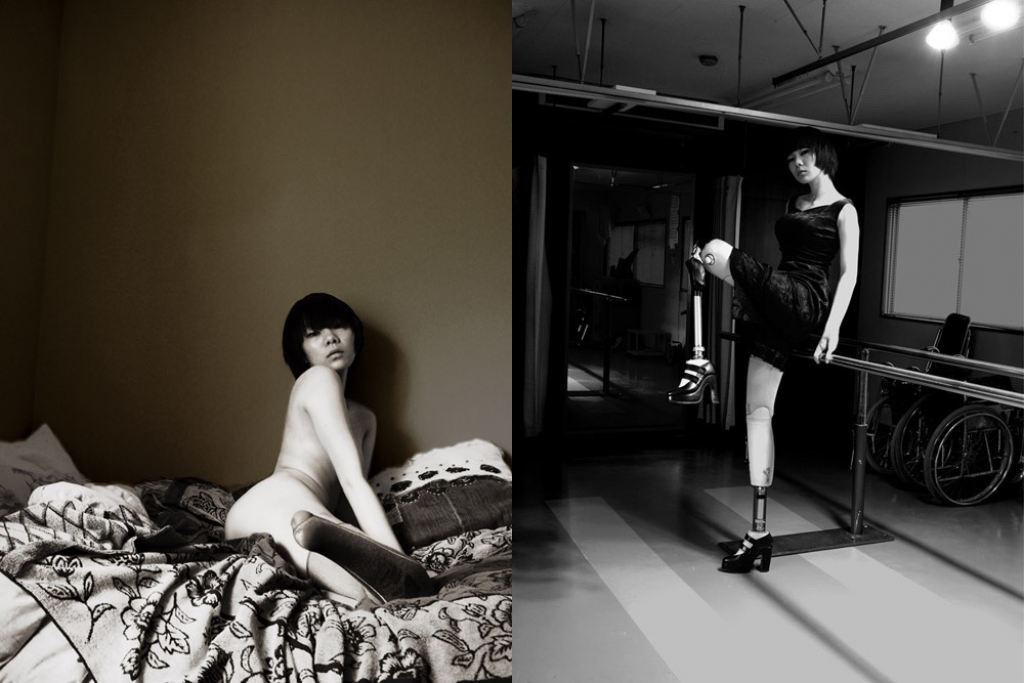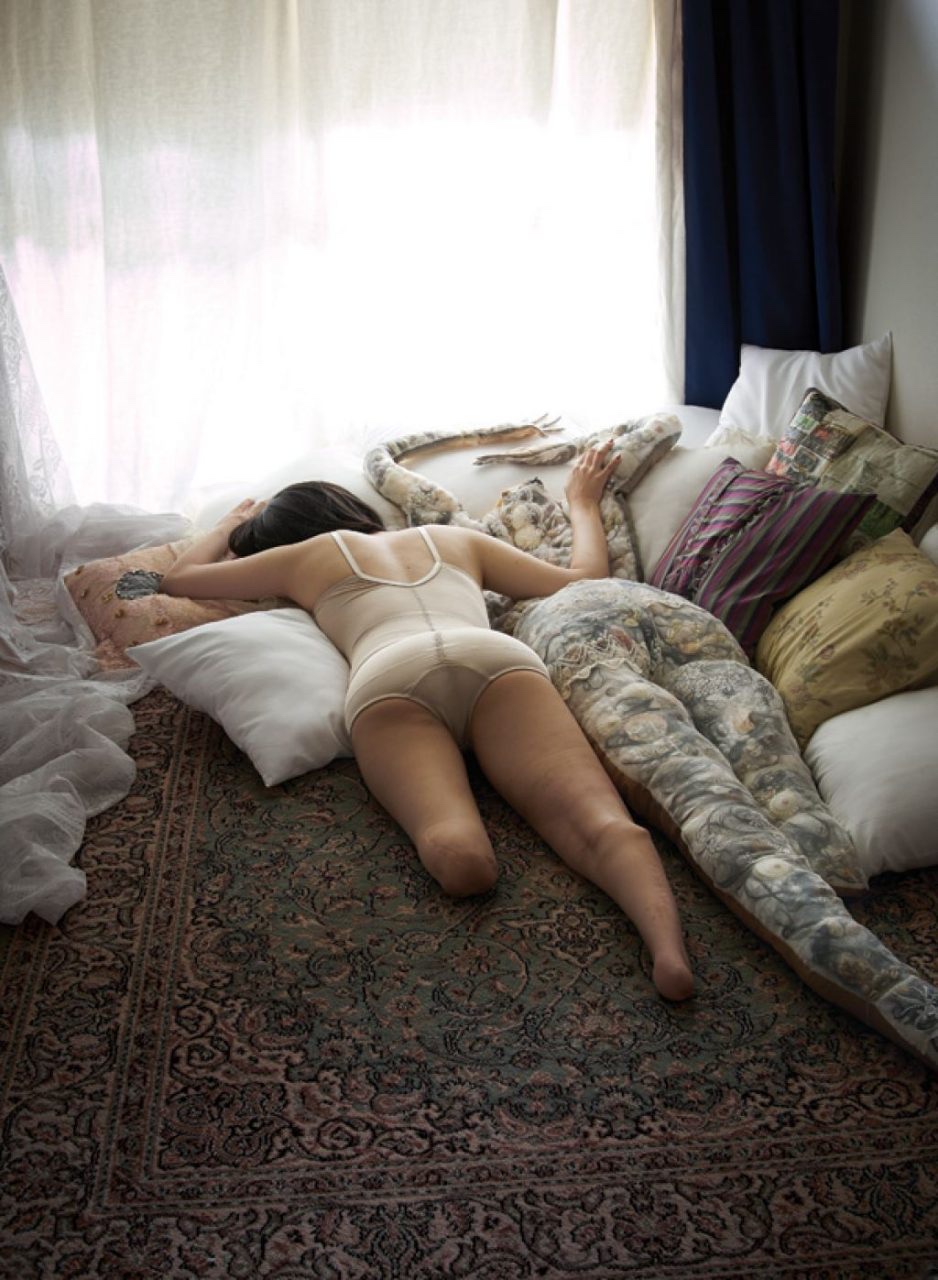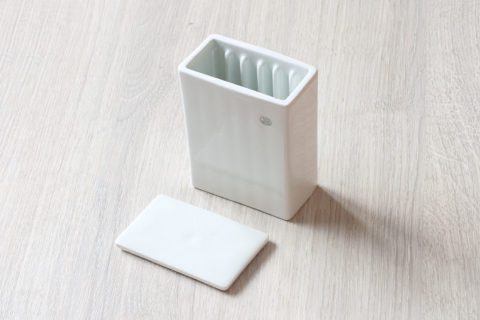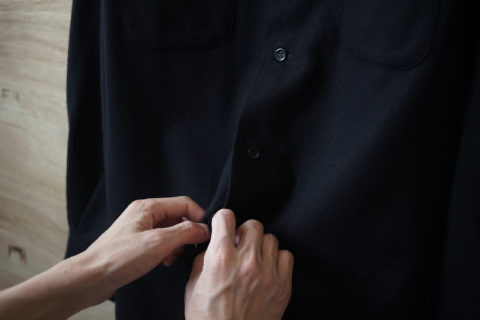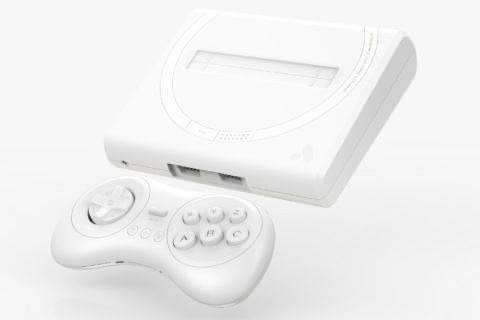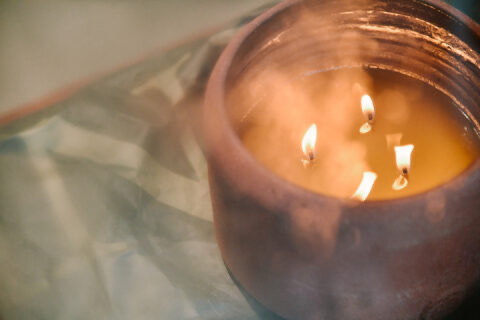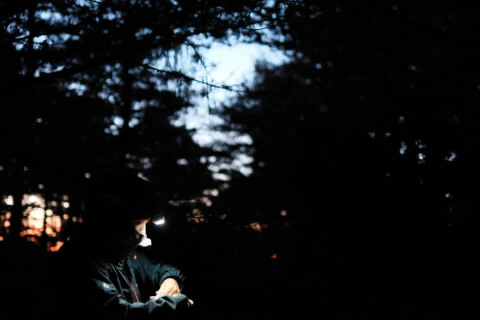
大部份人都希望能成為獨一無二的人,但藝術家片山真理,卻自小渴望能變成普通人,長著普通的雙手與雙腿,以普通的姿態站著,以普通的姿態走路。
While many wish to be unique, being common people has always been the hope of artist Mari Katayama. Ever since childhood, Katayama has always desired for a usual pair of hands and legs. Standing and walking in a usual posture was to her an unattainable luxury.
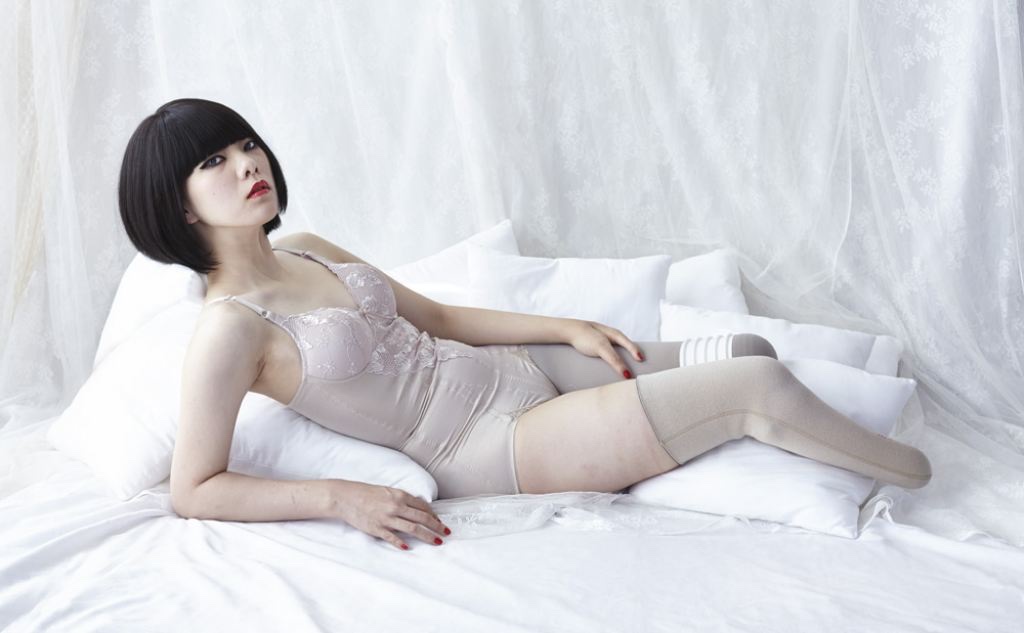
今年29歲的片山真理,出生時因為欠缺脛骨,雙腳嚴重內彎,左手亦只有兩根指頭,因外觀上的差異,小時經常被欺侮。雙腳無法支撐她的身體,為了能夠獨自走路,小時候的她從大腿至腳掌都得套上輔助器,踏出的步伐歪斜而生硬,為了讓自己看來「普通」一點,她努力學習路人的步姿,卻始終未如理想。身體的缺陷最教她感到困擾的不止於此,還有這雙腳無法套上漂亮的高跟鞋,至使九歲時,當醫生問她要否切除雙腳以裝上義肢,年紀小小的她毅然應允了。
Mari Katayama was born 29 years ago lacking shinbones. This made her legs seriously bow inwards, and her left hand bears only two fingers. She was heavily bullied because of her uncommon appearance. Orthoses were always attached to the legs of her tiny body, but her walking posture was still far from being normal. Not only was the little Katayama frustrated by her awkward posture, she was as well upset for not being able to slip on a pair of elegant high heels. When she was given the option of amputation at the age of nine, without a second thought she accepted the idea of replacing her clubfeet with prosthetics.
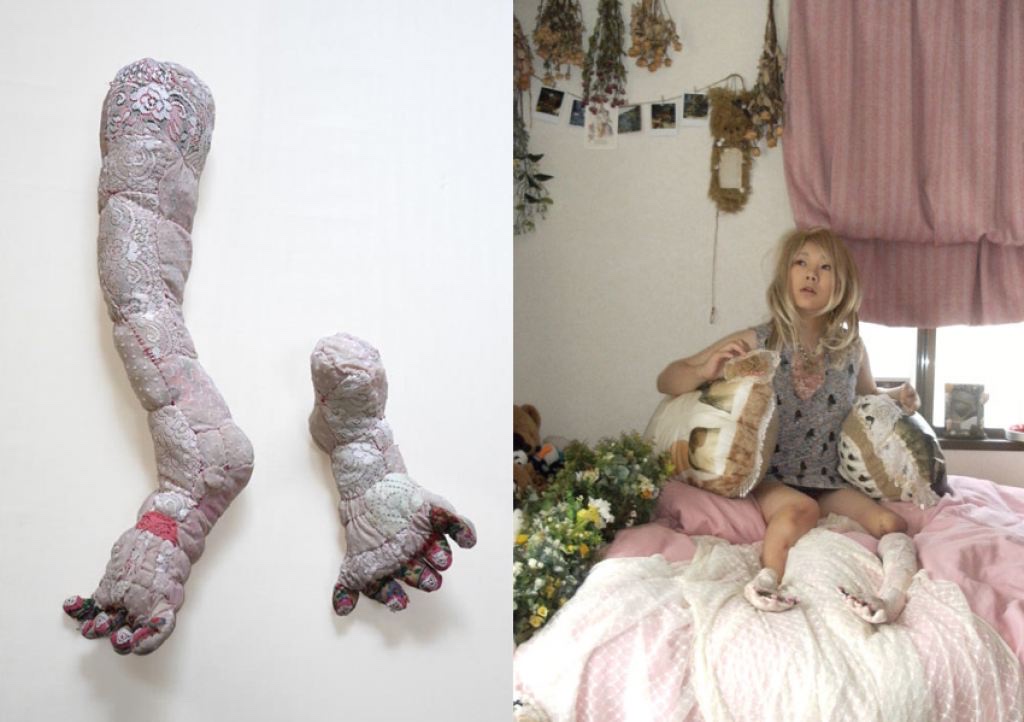
雙腿離開自己已十多二十個年頭,雙腿存在時的感觸卻仍深深烙在片山真理的記憶裡,有時她腦中會浮現立腳踏地面時的感覺,有時甚至會感到雙腿發癢,當伸手想去抓時,才猛然記起它們已不復存在。自己跨下的,是堅硬而冰冷的義肢。若雙腿仍長在自己身上時,它們該會是甚麼模樣呢?片山真理疑惑之時,為自己塑造了一對斷肢,套在自己肌肉已經委縮了的腿上,為自己拍下一幀又一幀的自拍照。
After bidding her legs farewell for 20 years, memory of having the clubfeet is fresh as yesterday. Sometimes she recalls the feeling of standing on her own bowed feet, or even has an illusionary itch on her long-gone feet. She only vividly remembers her body is supported by a pair of sturdy but bloodless prosthetics when she tries to give a good scratch to the illusionary itch. How would life be like if she was still with her clubfeet? This curiosity prompted Katayama to reproduce how she imagines her legs would be like. She attached those legs to her thighs with atrophied muscles, and created a series of self-portrait.
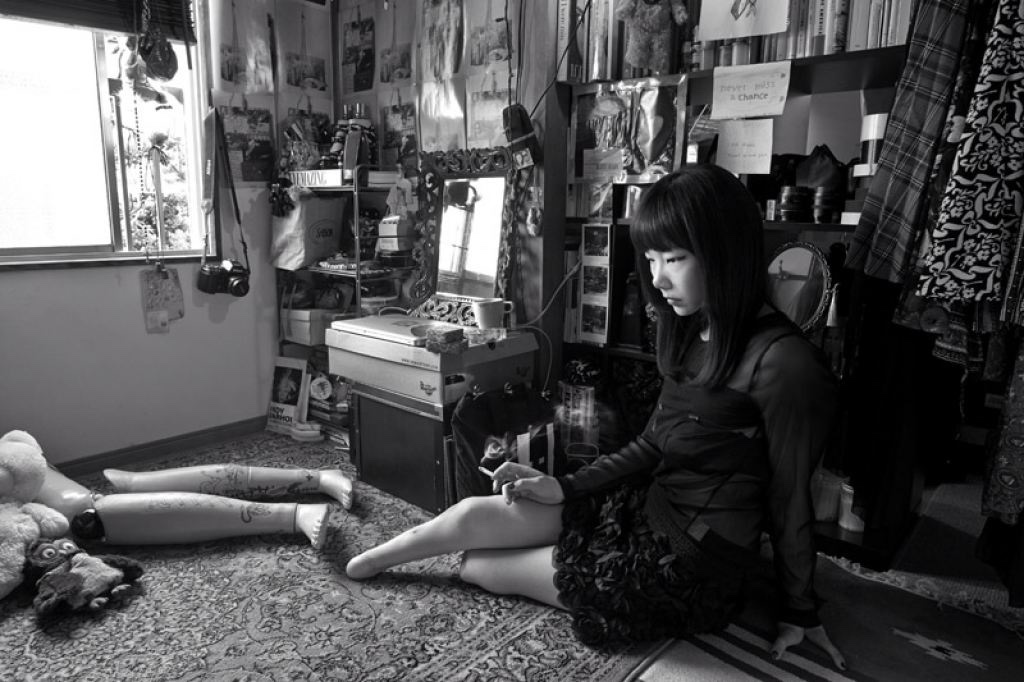
片山真理於2013年製作的攝影作品系列「Smoking Area」,照片中的她赤祼地窩在被窩裡;她把自己塞進紙箱的狹縫裡,伸展著殘缺的雙腳;在雜亂的房間裡她任義肢躺在身旁;她半裸上身蓆地而坐,身後的義肢還套著襪子……每一張照片都有著共通之處,就是裡面的她,指間都夾著香煙。片山真理各個系列的照片都拍得如此真實,不少人看過後,都以為那就是真實的她,毫無保留地,赤祼祼地展現在觀者眼前。但事實並非如此,照片中看似真實的居家環境,其實都是精心的佈居,連一個個紙皮箱的位置,她都仔細計算後才決定的。在這些虛假的生活空間之中,她演出她自己。
In her 2013 photography series “Smoking Area”, Katayama pictured herself lying naked in bed, or sitting between piles of cartons with her legs stretching out. In some pictures she sits on the floor and her prosthetics are laid randomly near her in a messy room, she sometimes even puts socks on her prosthetics. One thing in common among all pictures is that Katayama is always smoking in her self-portraits. Her self-portrait series look so real that many audiences believe that is Katayama in real life, and thought Katayama entirely exposed her true self under camera lens. The living space as shown by the pictures is however carefully arranged backdrop. She was in fact acting as herself inside of this hyperreal constructed space.
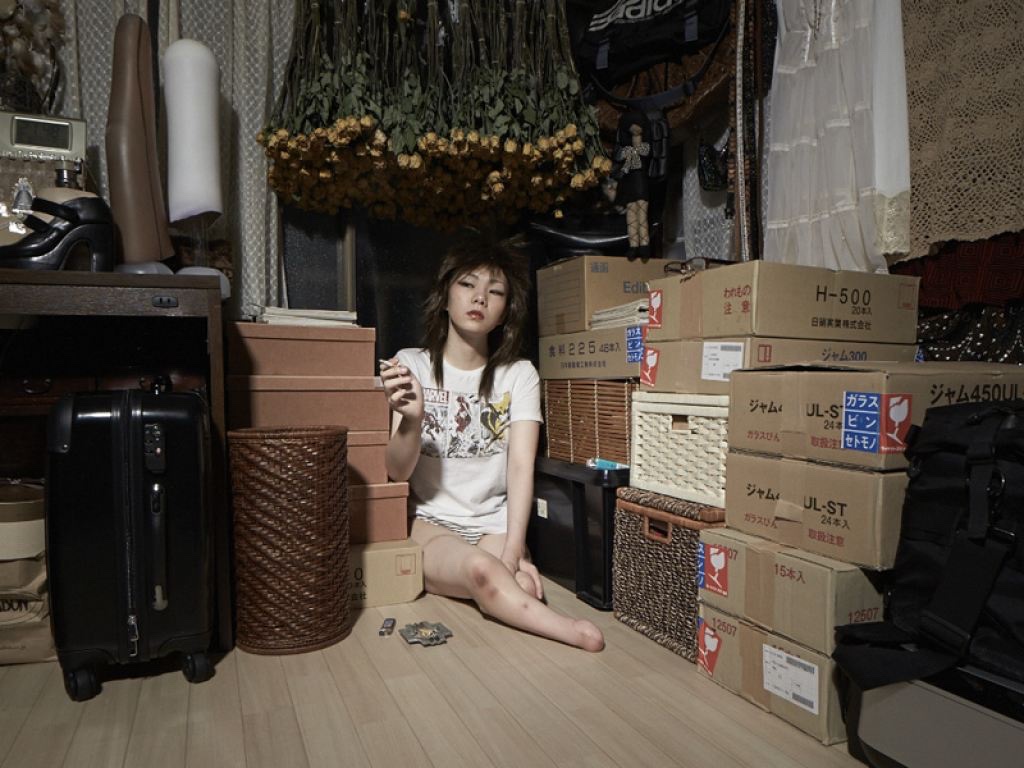
「『片山小姐是很努力的,雖然雙腿套上義肢,經常被欺侮,面對著各種痛苦,卻仍努力不懈』,我經常被包裝成這樣的『片山真理』。跟普通人相比可能過得比較辛苦吧,但對我來說這只是無可奈何而已,也不想表現得『很辛苦』。」片山真理在一次訪問中,提及到面對別人對自己誤解時的心情,在漸受注目的同時,誤解也漸深,後來連她自己也不自覺地假裝堅強,小心翼翼地經營著片山真理這個角色,確保不願曝露的那部份自己不會外洩。
“‘Miss Katayama is a hardworking person. Regardless of the pain she has from her prosthetics and the agony from being bullied, Katayama never gives up.” This is what the outside world imagines me to be. I might have a more difficult life when compared to the normal ones, but to me, it is my undeniable fate after all. I don’t want to act like “life is very hard”.’ Katayama once said in an interview that she felt being increasingly misunderstood by the audience along with the growing fame. She was in turn affected by this false expectation and pretended to be strong and tough. The Mari Katayama as seen by the public is in fact a character carefully constructed by her, so as to keep the actual Katayama in a safe realm not to be gazed at.
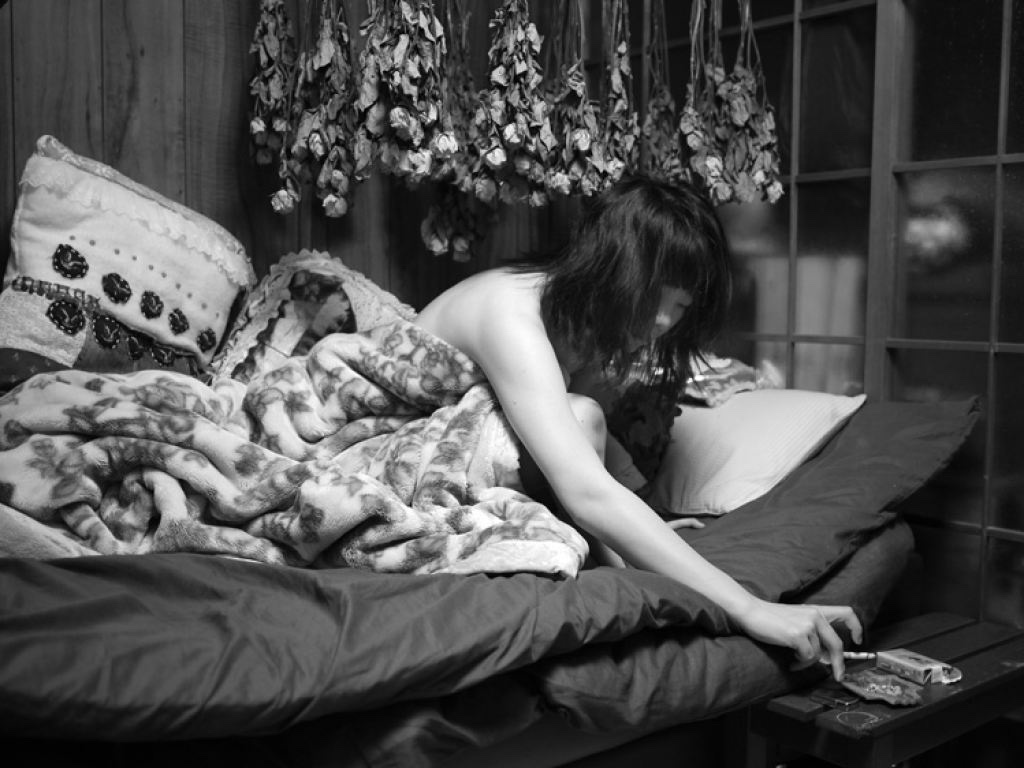
「其實所有人都在扮演著自己設定的角色吧,在公司裡及在家裡的自己便截然不同,面對著不同朋友,展示出來的面孔也不一樣。」那,究竟真正的自己是怎樣的呢?2015年,她發表了作品「You’re Mine」,作品裡包含了三個自己——一個用石膏製成,與片山真理等身大,連指紋都仔細摹臨了,但面孔卻是一塊鏡,誰把面湊過去,它就成為誰。另一個自己展示在照片裡,濃裝艷抹,姿勢嬌揉,象徵著片山真理吸收了眾人特質後,拼湊成「表面的自己」。最後一個,則是最真實的,映照在全身鏡子裡,那就是現在的自己。一個人,如此多面相,每一個都是真實的自己。
“Performing roles designed by oneself is perhaps what everyone has been doing. People just put on different faces when being at work, being at home or being with friends.” Which one is the real face then? In Katayama’s art installation “You’re Mine” in 2015, she demonstrated three faces of “self” to the audience: a plaster figure, a self-portrait, and a full-length mirror. The plaster figure is a life-size close replica of Katayama’s physical self, even to details as minute as finger prints. The face of the figure is however a mirror, it becomes a different person as soon as anyone looks into the mirror. Katayama with heavy make-up sits in a self-conscious posture in the self-portrait; this is like a collage of faces of many people, a patched up “superficial self”. The last one that features the self in the full-length mirror is perhaps the one closest to reality, a mere reflection that is not artificially altered. The idea of “reality” is however more abstract than a real/unreal distinction, because every face is in fact part of the person’s reality.
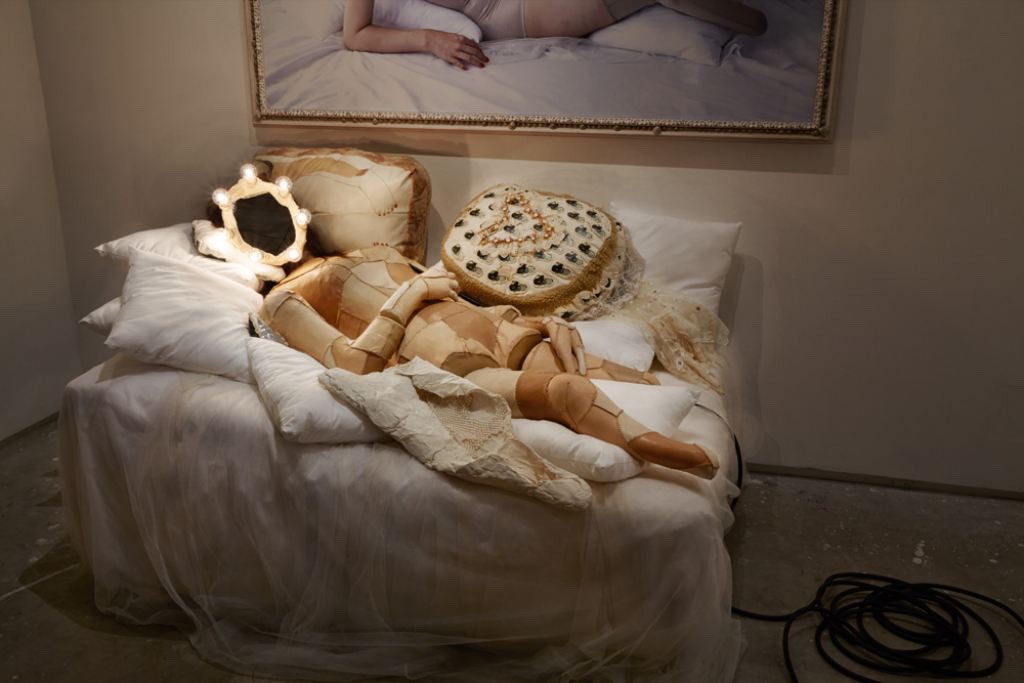
片山真理自小努力模仿他人,裝扮成別人期望的自己,為變得與他人相似,心裡受盡苦頭,最後卻發現原來這行為,原來已是再普通不過。「為了順利在社會裡存活下去,任何人都會自別人身上學習,於怎樣的場面裡要怎樣做;要怎樣做才不會被討厭。任何人都是從別人偷取特質,然後製作出『自己』,而這跟一路走來的我,也是相同的。」
Since childhood Mari Katayama has tried very hard imitating others, disguising so as to live up to others’ expectation — the effort she put in being normal gave her enormous pain. It was only until recent years that she realized constructing oneself into a desirable person is indeed one of the most common behaviour. “To survive in this society, one has to learn from others how to behave in different occasion, all the dos and don’ts of social interactions are knowledge we gained by observing others. We all construct a ‘self’ using this knowledge, in this regard, I am as normal as anyone is.”
